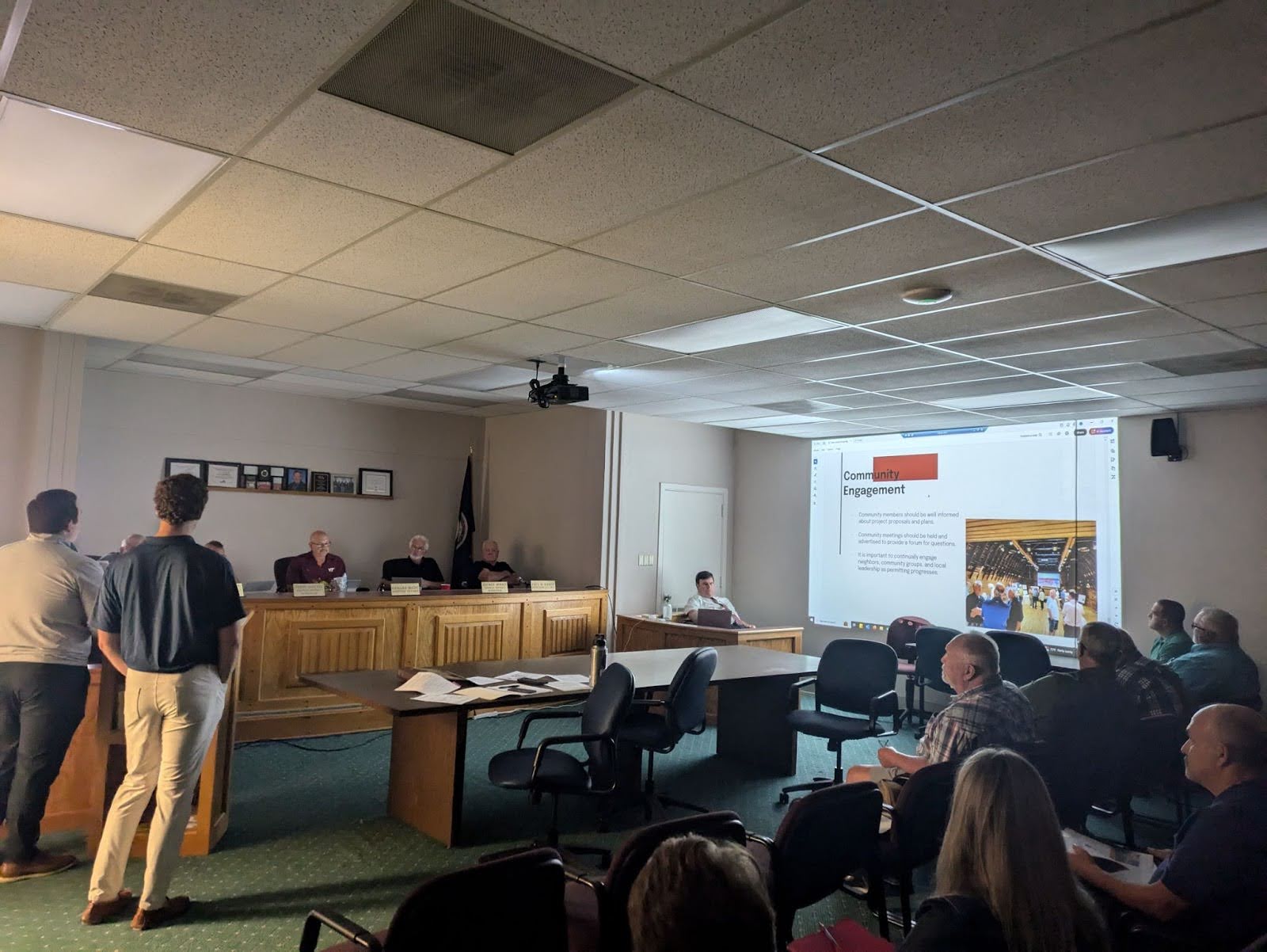|
|
|
HAPPY FRIDAY
October 4, 2024
|
|
|
|
Welcome to Energy Right’s weekly roundup! This week our team went to over half a dozen different
counties on our mission for
Clean Energy the Right Way.
|
|
|
|
|
|
Youngkin’s $10M Initiative Bridges Gaps for Virginia’s Energy Future
|
 |
 |
|
|
|
The launch of the Virginia Clean Energy Innovation Bank (VCEIB) by the Youngkin administration marks a significant step forward for clean energy progress in Virginia. As conservatives supporting a transition to cleaner energy, we see this as a practical approach that addresses both environmental concerns and economic growth. With $10 million in seed funding, the VCEIB is set to bridge financing gaps for innovative energy projects, ensuring Virginia’s competitiveness in a rapidly changing energy landscape.
While skepticism exists across the aisle regarding the administration’s motivations, it’s important to recognize that bold, decisive action is often necessary for effective governance. The focus on collaboration among state agencies—rather than competition—is a strategic move that can unlock federal resources more efficiently. The emphasis on innovation and adaptability positions the VCEIB to lead in clean energy solutions, aligning with our core values of economic responsibility and environmental stewardship.
By embracing this opportunity, the VCEIB demonstrates that conservatives can be at the forefront of the clean energy transition. This initiative is more than just a financial commitment; it’s a path to a resilient energy future, benefiting both our economy and environment. Ultimately, supporting clean energy innovation fosters job creation, economic growth, and a sustainable future for Virginia.
Read more here.
|
|
|
|
|
|
|
|
|
|
|
|
Solar Projects and Property Values: The Importance of Thoughtful Planning
|
|
|
|
|
Recent research into the impact of utility-scale solar energy projects on property values reveals promising insights for communities considering clean energy initiatives. A study conducted in the Midwest found that solar projects generally did not harm nearby real estate values; instead, property values rose by about 0.5–2%. It’s crucial to note, however, that these positive effects were mostly seen in rural areas. In urban and suburban settings, slight declines of 1–2% were observed, emphasizing the importance of thoughtful planning and site selection.
These findings highlight how critical community engagement and strategic development are to making solar farms good neighbors. In rural areas, solar projects can be seamlessly integrated into the landscape, often enhancing local property values. Utilizing vegetative buffers and thoughtful landscaping helps address aesthetic concerns, and smaller projects—under 20 megawatts (20MW projects are typically 100-150 acres)—show even greater positive impacts. This approach aligns with Virginia’s unique blend of rural and suburban areas, providing guidance on where solar investments may be most beneficial.
For Virginia, this serves as a reminder of the value of careful planning—something we know is so important. With the rapid growth of utility-scale solar projects, we must ensure they are integrated into our communities responsibly. By focusing on suitable sites and mitigating impacts, we can achieve the dual goals of environmental benefits and economic growth. Embracing solar energy thoughtfully supports our renewable energy goals while fostering strong community relationships and enhancing property values, ensuring a sustainable future for Virginia.
See the full study here.
|
|
|
|
|
|
|
|
|
|
|
|
This week, our team travelled to:
Chesterfield, Giles, Roanoke, and Salem
counties as well as Roanoke City
|
|
|
|
|
|
|
|
|
|
This week, Ben and Skyler on the Energy Right team presented to the Giles County Planning Commission.
The discussion emphasized the economic benefits of solar energy to the county, the need to diversify our statewide energy sources, and best management practices for the county’s consideration. While Giles County has yet to implement any solar projects, our priority is to ensure that all communities are well-equipped to make informed decisions about new energy sources when the opportunity arises. We believe that proactive engagement will empower local leaders and citizens to embrace the benefits of renewable energy in the future.
|
|
|
|
|
|
|
|
ERCOT, SPP and 3 US regions need ‘significant investment’ in new generating capacity: BofA
|
|
A recent report from BofA Global Research suggests the U.S. could need up to 300 GW of new electricity capacity by 2035, though this is a high-growth scenario and not necessarily realistic. The base scenario predicts an additional 100 GW to meet 1.5% annual demand growth, but needs will vary greatly by region. The Southwest and Southeast, despite recent high demand growth, may need far less capacity if historical trends continue. Meanwhile, regions like Texas and the Northwest could require substantial investments. Planning must consider both the variability of demand growth and the differences in regional capacity needs.
|
|
|
|
|
|
|
|
|
|
NEXT WEEK
We’ll be going to Botetourt, Brunswick, King William, Northumberland, and Roanoke counties.
Have a great weekend!
|
|
|
|
|
|
|
|
|
|
“A Connecticut firm intends to develop a solar farm near Clearview Drive and Martinsville plans to
reclaim the old Lynwood Golf Course and find another company to develop a solar farm there. Officials with Enfield, Connecticut-based Louth Callan Renewables said they were voluntarily conducting an informational session at Hope Church, 631 Clearview Drive in Martinsville on Wednesday…A one-page information sheet presented at the meeting described ‘Clearview Drive Solar’ as a 28.7 megawatt facility located on 188 acres between Clearview Drive in Henry County and Banks Road in Martinsville.”
|
|
|
|
|
|
|













